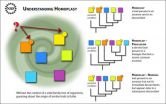(Press-News.org) EAST LANSING, Mich. — There's more than one way to silence gene activity, according to a Michigan State University researcher.
Downregulating activity is how healthy genes should shift out of their development cycle. The results, published in this week's Current Biology, discuss how specific repressor proteins – which researchers have named Hairy and Knirps – slow genes during development and how the process is comparable to slowing down a car, says molecular biologist David Arnosti.
The binding of repressor proteins to DNA provides a molecular switch for such regulation. Although the two types of protein have been identified as silencers of gene expression, each one uses a distinct molecular mechanism to halt the process, said Arnosti, director of MSU's Gene Expression in Disease Development initiative.
These mechanisms may hold the keys to explaining how diseases, such as cancer, diabetes and arthritis can be traced to genes that are unable to shift gears properly and can't stop, Arnosti said.
"In automotive terms, a driver can either brake or downshift the transmission to achieve the same result," said Arnosti, who published the paper with Li M. Li, a former MSU doctoral student now working at the University of California, Berkeley. "Similarly, short-range and long-range repressor proteins both interfere with the basic gene expression machinery, but in different ways."
In sequencing the human genome, scientists have assembled a parts list and can point to genes that play a part in disease. Through Li's and Arnosti's research, however, scientists can now begin to see how these genes are regulated through special mechanisms, helping show how an entire organism's genes are controlled.
"Mechanistic studies such as this are giving us the assembly instructions for the genome," Arnosti said. "Basically, it's giving us a way to read genomic control instructions."
Arnosti's research involved fruit flies, which have more genetic similarities to humans than was once thought. Based on these similarities, the team's research could soon lead to advances in human medicine.
"We like to say that fruit flies are like little people with wings; they have the same basic genetic nuts and bolts, including genetic switches and proteins," Arnosti said. "While our work is the first of its kind, it is only a small step for other scientists to begin conducting these same studies on human genes. With regards to disease, this study gives us the basic tools to look at genes in a disease state and understand what is going wrong at the genetic level."
Arnosti's research furthers the work of the GEDD, a group of MSU researchers using cutting-edge molecular approaches to understand mechanisms of gene regulation and promote excellence in training the next generation of biological researchers. One area that the group is promoting is integrated systems biology studies.
"By taking a systems biology approach, we're beginning to understand that it's not one bad gene that's responsible for causing cancer," Arnosti said. "We are starting to unravel how gene switches talk with one another as well as how a number of slightly defective genes interact to create a diseased state."
###
Arnosti's work is funded in part by the National Institutes of Health and the MSU Foundation.
Michigan State University has been working to advance the common good in uncommon ways for more than 150 years. One of the top research universities in the world, MSU focuses its vast resources on creating solutions to some of the world's most pressing challenges, while providing life-changing opportunities to a diverse and inclusive academic community through more than 200 programs of study in 17 degree-granting colleges.
END
As if the recent prediction that half of all Americans will have diabetes or pre-diabetes by the year 2020 isn't alarming enough, a new genetic discovery published online in the FASEB Journal (http://www.fasebj.org) provides a disturbing explanation as to why: we took an evolutionary "wrong turn." In the research report, scientists show that human evolution leading to the loss of function in a gene called "CMAH" may make humans more prone to obesity and diabetes than other mammals.
"Diabetes is estimated to affect over 25 million individuals in the U.S., and 285 million ...
How severe can climate change become in a warming world?
Worse than anything we've seen in written history, according to results of a study appearing this week in the journal Science.
An international team of scientists led by Curt Stager of Paul Smith's College, New York, has compiled four dozen paleoclimate records from sediment cores in Lake Tanganyika and other locations in Africa.
The records show that one of the most widespread and intense droughts of the last 50,000 years or more struck Africa and Southern Asia 17,000 to 16,000 years ago.
Between 18,000 and 15,000 ...
Cambridge, MA- Adding particles to liquids to make currents visible is a common practice in the study of fluid mechanics. The approach was adopted and perfected by artist Paul Matisse in sculptures he calls Kalliroscopes. Matisse's glass-enclosed liquid sculptures contain an object whose movement through the liquid creates whorls that can be seen only because elongated particles trailing the object align with the direction of the current; light reflects off the particles, making the current visible to the viewer.
Researchers at MIT recently demonstrated that this same ...
With the genetics of so many organisms that have different traits yet to study, and with the techniques for gathering full sets of genetic information from organisms rapidly evolving, the "forest" of evolution can be easily lost to the "trees" of each individual case and detail.
A review paper published this week in Science by David Wake, Marvalee Wake and Chelsea Specht, all currently National Science Foundation grantees, suggests that studying examples of homoplasy can help scientists analyze the overwhelming deluge of genetic data and information that is currently ...
Montreal, February 24, 2011 – The interventional cardiology team at the Montreal Heart Institute (MHI) recently began patient enrolment for a new device, the Neovasc ReducerTM, designed to treat patients suffering from refractory angina. The treatment method is a first in North America and is being conducted as part of an international study, the COSIRA trial. This innovative treatment is promising for thousands of Canadians disabled by refractory angina and who lack alternatives for relieving their symptoms and improving their quality of life.
Developed in Canada by ...
A strong link between victimization experiences and substance abuse has been discovered by researchers at the University of Illinois at Chicago.
The correlation is especially prevalent among gays, lesbians and bisexuals -- more so than in heterosexuals, says Tonda Hughes, professor and interim head of health systems science in the UIC College of Nursing. Hughes is lead author of the study, published in the journal Addiction.
Researchers compared victimization experiences of unwanted sexual activity, neglect, physical violence, and assault with a weapon, across four ...
ARLINGTON, Va. - One Sailor's request to replace humming fluorescent bulbs with a quiet alternative inspired the Office of Naval Research (ONR) to create the Solid State Lighting (SSL) project, currently being evaluated aboard several ships and submarines across the U.S. Navy.
A product of ONR's TechSolutions program, SSL is one of several rapid-response technologies created using recommendations and suggestions from Navy and Marine Corps personnel. (Watch TechSolutions products in action via YouTube.)
The SSL project introduced the energy-saving, nonhazardous LED ...
Age alters memory. But in what ways, and why? These questions comprise a vast puzzle for neurologists and psychologists. A new study looked at one puzzle piece: how older and younger adults encode and recall distracting, or irrelevant, information. The results, published in Psychological Science, a journal of the Association of Psychological Science, can help scientists better understand memory and aging.
"Our world contains so much information; we don't always know which is relevant and which is irrelevant," said Nigel Gopie, who cowrote the study with Fergus I.M. Craik ...
Researchers at the University of California, San Diego School of Medicine and Rady Children’s Hospital-San Diego say an evolutionary gene mutation that occurred in humans millions of years ago and our subsequent inability to produce a specific kind of sialic acid molecule appears to make people more vulnerable to developing type 2 diabetes, especially if they’re overweight.
The findings are published in the Feb. 24 online edition of The FASEB Journal, a publication of the Federation of American Societies of Experimental Biology.
Corresponding study author, Jane ...
Wheat growers in the Southwest have a better idea about how to adjust to climate change in the decades ahead, thanks to U.S. Department of Agriculture (USDA) scientists in Arizona.
Researchers with the USDA's Agricultural Research Service (ARS) installed infrared heaters in experimental wheat fields at the agency's Arid-Land Agricultural Research Center in Maricopa, Ariz., to simulate growing conditions expected by 2050. ARS is USDA's principal intramural scientific research agency, and this research supports the USDA priority of responding to climate change.
Wheat ...


